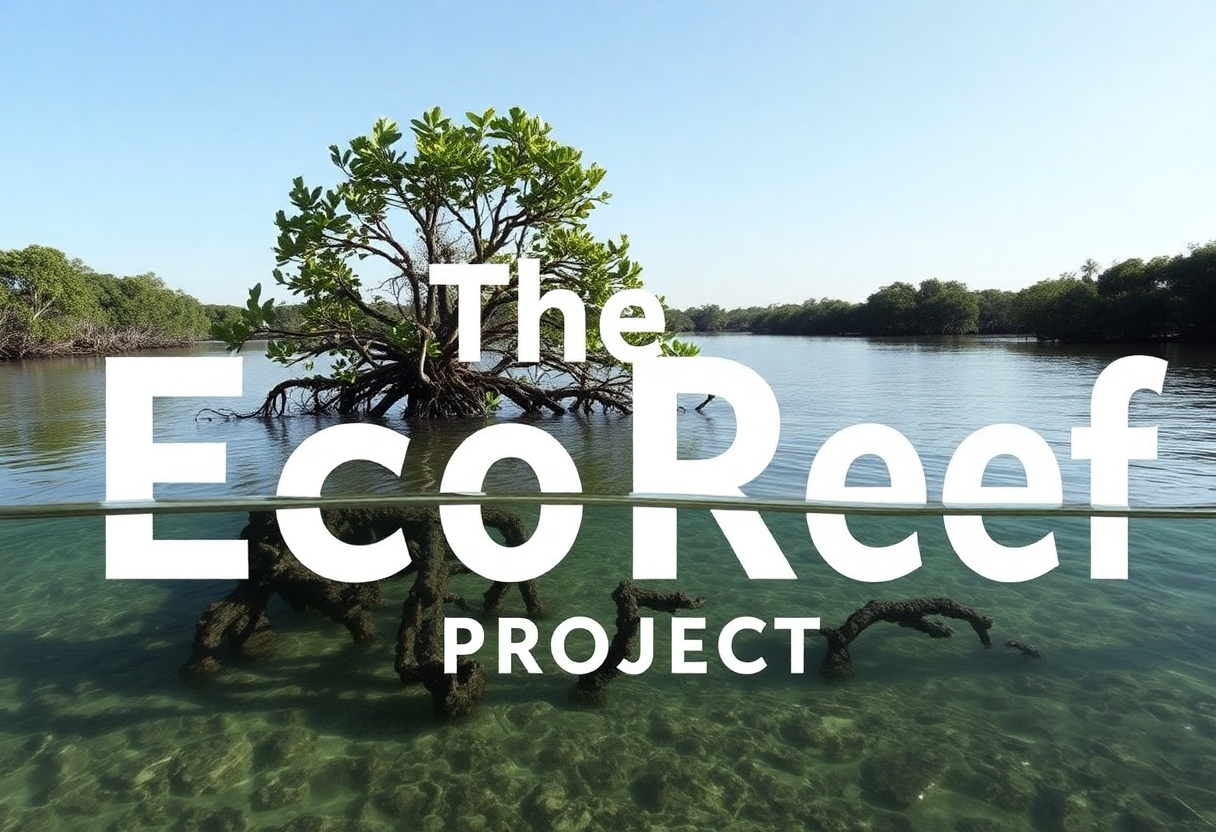
Building New Houses in Established Suburbs vs. Creating New Suburbs
An Interesting Look At Building Homes In NSW
————————————————–
Introduction
In terms of care for residents vs. favoring developers, the NSW Government faces a delicate balancing act but we all hope they care for the public over developers.
When it comes to housing development, New South Wales faces a critical decision on whether we should focus on building new houses within established suburbs or create entirely new suburbs. Each approach has its merits, and the choice impacts our environment, economy, and community. In this blog post, we’ll explore the pros and cons of both options and discuss the NSW Government’s efforts to guide sustainable housing development.
We have to build new homes and this is a known fact but we must do it sensibly and correctly for the long-term benefit of all.
The common belief is that building more homes in established areas automatically benefits everyone—especially first-home buyers and lower-income workers— this is not entirely accurate. While increasing housing supply is essential, several factors complicate the relationship between supply and affordability.
Here’s why –
Demand-Supply Balance: Even with more homes, if demand significantly outpaces supply (as seen in high-demand areas like Sydney), prices remain high.
Quality and Location: New homes are often built in desirable locations with higher land values. These cater to higher-income buyers, leaving lower-income individuals with limited options and the median house price being lifted.
Market Dynamics: Developers prioritize profitability, pricing new homes at market rates. This doesn’t always align with affordability goals.
So what this means is if a home in Mosman is 5 million dollars AUD and the house in Mount Druitt is 1 Million Dollars AUD. Mosman is not a first home buyers location and rebuilding in Mosman also means a knockdown rebuild normally which means the house has to normally be bought and most of the time above a land value set price and normally on average to the local area. This means say the median house price for Mosman is 5 million dollars AUD. This is the starting point before you even think of rebuilding. To stay protected on investment you have to get this money back or you lose money.
For example, suburbs within a 10km radius of Sydney CBD are often unaffordable for average earners. Therefore, the notion that increased supply automatically lowers costs oversimplifies a complex issue.
The Myth of Increased Supply Automatically Lowering Costs
——————————
Common Assumption
Claim: Building more homes will automatically lead to lower housing costs.
Reality: The relationship between supply and affordability is multifaceted.
Factors to Consider
Demand-Supply Balance:
Reality: If demand outstrips supply significantly, additional homes may not bring down prices substantially.
Example: In high-demand areas like Sydney, where population growth and migration persist, supply struggles to keep pace.
Quality and Location
Reality: New homes are often built in desirable locations with higher land values.
Impact: These homes cater to higher-income buyers, leaving lower-income individuals with limited options.
Market Dynamics
Reality
Developers prioritize profitability.
Impact
New homes are often priced at market rates, which may not align with affordability goals.
Challenges for First Home Buyers and Lower-Income Workers
——————
Entry Barriers
—————-
Reality
Even with increased supply, entry into the property market remains challenging.
Factors
High upfront costs (deposits, stamp duty), stricter lending criteria, and competition.
Income Disparities
——————-
Reality
Median incomes in NSW struggle to match housing costs.
Example
Suburbs within a 10km radius of Sydney CBD are often unaffordable for average earners.
Investor Influence
————
Reality
Investors play a significant role in the market.
Impact
Their demand affects prices, and they often target new properties.
A Holistic Approach Needed
While building more homes is essential, it’s not a panacea for affordability. A holistic approach involves –
Affordable Housing Policies – Targeted initiatives for first-home buyers and low-income workers.
Sustainable Development – Balancing supply with infrastructure, transport, and community needs.
Long-Term Vision – Considering the impact on house prices, rental markets, and overall well-being.
Building New Houses in Established Suburbs
——————-
Pros
Higher Land Value
Established homes often come with larger land parcels, providing the potential for better capital growth.
Land values tend to appreciate over time, benefiting homeowners.
Value-Add Potential
If you enjoy renovation projects, established homes offer opportunities to enhance value through improvements.
Historical charm and unique features can make these properties appealing.
Resale History
Transaction history from previous sales helps gauge property value trends.
Buyers can make informed decisions based on historical data.
Existing Infrastructure
Established suburbs offer amenities like schools, parks, and shops.
Mature gardens, sheds, and fencing add value to the property.
Cons
Livability and Preference
Older-style properties may not align with modern preferences or lifestyles.
Layouts and designs might not suit contemporary needs.
Maintenance and Repair Costs
Established homes require ongoing maintenance and occasional repairs.
Aging infrastructure can lead to higher costs.
Lower Rental Yields
Older dwellings may not command the same rental returns as brand-new properties.
Tenants often prefer modern interiors.
Building New Suburbs
————–
Pros
Government Incentives
New house and land packages may offer savings on stamp duty (payable only on land value).
Tax benefits for investors (e.g., depreciation on furnishings).
Lower Maintenance Costs
New homes require less immediate maintenance.
Modern materials and construction techniques contribute to longevity.
Higher Rental Returns
Contemporary interiors attract tenants, potentially leading to better rental income.
Energy-efficient designs reduce ongoing costs.
Cons
———-
Affordability
New homes and units may be more expensive upfront.
Location and budget play a significant role.
Land-to-Asset Ratio
New properties often have smaller land-to-asset ratios.
Capital growth potential may be lower.
Environmental Considerations
Both options impact the environment
——————————-
Established Suburbs
Redeveloping existing areas minimizes urban sprawl.
Utilizing existing infrastructure is more sustainable.
New Suburbs
Proper planning and sustainable design can create environmentally friendly communities.
Green spaces, energy-efficient buildings, and reduced carbon footprints are essential.
Demolishing Old Quality Buildings
—————————-
Reasons for Demolition
Safety Concern
Necessity
Buildings that pose safety risks due to structural instability or decay must be demolished. This is pretty rare
Impact
prevents potential harm to occupants and passersby.
Urban Renewal and Development:
Opportunity
Demolition allows for redevelopment, and revitalizing neighborhoods.
Challenge
Balancing renewal with preserving historical and architectural value.
Economic Factors
——————
Cost-Benefit Analysis
Sometimes demolition is more cost-effective than extensive renovations.
Impact
Economic considerations influence decisions.
Consequences of Low-Quality Housing –
Short-Term Gain, Long-Term Loss
—————————
Issue
Replacing solid buildings with poorly designed, low-quality housing sacrifices long-term durability.
Impact
Residents may face maintenance issues, reduced comfort, and higher costs.
Environmental Impact
——————
Carbon Emissions
Constructing new buildings emits significant carbon due to materials (steel, cement, bricks).
Sustainability
Preserving existing structures reduces embodied carbon.
Community Character
———————-
Loss of Identity
Demolishing historic or iconic buildings erodes neighborhood character.
Sense of Place
Well-designed, enduring architecture contributes to community pride.
Balancing Preservation and Progress
——————-
Smart Redevelopment
Opportunity
Adaptive reuse of old buildings can create vibrant spaces.
Example
Converting factories into lofts or offices.
Incentivizing Upgrades –
Proposal
Encourage property owners to upgrade existing structures rather than demolish them.
Benefits
Reduced carbon emissions, preserved heritage, and improved housing quality.
Holistic Approach
—————
Considerations
Balance safety, economic viability, and environmental impact.
Goal
Create sustainable, resilient communities.
Mindful Urban Transformation
—————–
A Better Future
While urban development is essential, thoughtful decisions must weigh short-term gains against long-term consequences. Prioritizing quality, sustainability, and community well-being ensures a more resilient and vibrant built environment.
The Irony of Demolishing Quality for Mediocrity
—————-
The Dilemma
Knockdown vs. Renovation
Solid Buildings Under Threat
Issue
Many well-constructed, older buildings face demolition.
Irony
These structures often have superior craftsmanship and durability.
Incentives for Knockdowns
———————
Economic Factors
Demolition can be cheaper than extensive renovations. Cost benefits for developers and also developers support the political parties passing the dwellings.
Carbon Emissions
However, this approach has significant environmental consequences that may outweigh the benefits.
Advantages of Solid Buildings
————————-
Design and Craftsmanship
Unique Character
Older buildings often exhibit architectural charm and historical significance.
Quality Materials
Solid foundations, brickwork, and timber contribute to longevity.
Environmental Impact
———————-
Carbon Debt
Creating new buildings emits substantial carbon (steel, cement, bricks).
Embodied Carbon
A significant portion of a building’s lifecycle emissions occurs during construction.
The Plywood Paradox
———————-
Low-Quality Materials
Trend
Some new buildings rely on chipboard, plywood, and lightweight materials that are easy to damage and do not last but are trendy but can be bad for the environment as they just do not last the test of time.
Consequences
Reduced durability, poor insulation, and maintenance challenges.
Short-Term Gain, Long-Term Loss
—————
Trade-Off
Sacrificing quality for cost savings harms long-term sustainability.
Carbon Footprint
The environmental impact of new materials compounds the issue.
Balancing Preservation and Progress
—————————
Smart Redevelopment
Adaptive Reuse
Transforming old buildings into functional spaces.
Sustainability
Retrofitting existing structures minimizes embodied carbon.
Policy Changes
—————–
VAT Incentives
Governments should encourage refurbishment over demolition.
Carbon Savings
Avoiding knockdowns immediately reduces emissions.
Mindful Urban Transformation
Preserving solid buildings while embracing modern needs is essential. Let’s prioritize quality, sustainability, and community well-being to create resilient and vibrant urban spaces for a cheaper and more resilient sustainable environment for all involved.
NSW Government Initiatives
—————————————
Pattern Book of Housing Design
The government is developing endorsed building designs for low-rise and mid-rise housing.
Architects, developers, and planners can use these designs as references.
Building Sustainability Index (BASIX)
All new builds must comply with BASIX requirements.
Covers water usage, energy efficiency, and thermal comfort.
myHome Planner
A resource for project home builders.
Guides research, planning, and design.
How building new houses in established suburbs versus creating new suburbs impacts the cost of living and the environment.
Government Kickbacks and Property Development
—————————–
Unraveling the Complex Web
Understanding Government Kickbacks
———————
What Are Kickbacks?
Definition
Kickbacks refer to illicit payments or favors given to public officials or decision-makers in exchange for favorable treatment.
Context
These can occur in various sectors, including property development.
Developer-Government Nexus
—————
Influence
Developers seek approvals, permits, and favorable zoning decisions from government bodies.
Temptation
Some developers may offer kickbacks to expedite processes or secure advantageous terms.
Potential Consequences of Kickbacks in Property Development
Quality Compromises
———-
Risk
When developers pay kickbacks, they may expect leniency in building standards or regulations.
Impact
Lower-quality construction, inadequate safety measures, and compromised durability.
Environmental Impact
——————-
Trade-Off
Kickbacks can lead to environmentally harmful practices. ‘You scratch my back and I scratch your back’ idea.
Example
Bypassing environmental impact assessments to expedite development.
Affordability and Equity
—————
Loss of Focus
Kickbacks divert attention from affordable housing needs.
Impact
Housing affordability suffers, affecting vulnerable populations.
Transparency and Accountability
Anti-Corruption Measures
Legal Framework Laws and regulations exist to prevent corruption.
Enforcement
Effective enforcement ensures accountability.
Public Scrutiny
——————
Media and Advocacy Investigative journalism and civil society play crucial roles.
Pressure
Public awareness can pressure governments to act against corruption.
Striking a Balance
While not all property development involves kickbacks, vigilance is essential. Governments must prioritize transparency, ethical decision-making, and the long-term well-being of their citizens. Developers, too, should focus on sustainable, equitable projects that benefit communities without compromising integrity.
Cost of Living
—————–
Established Suburbs
Property Prices
Impact: In established suburbs, property prices may be higher due to land scarcity and existing amenities.
Consideration: Higher property prices can affect affordability for homebuyers and renters.
Maintenance Costs
Impact: Older homes often require more maintenance and repairs.
Consideration: Homeowners need to budget for ongoing upkeep.
Utilities and Services
Impact: Established suburbs have existing utility connections (water, electricity, gas).
Consideration
Residents benefit from established infrastructure but may face higher utility costs.
New Suburbs –
Affordability
—————
Impact
New suburbs may offer more affordable housing options.
Consideration
Lower upfront costs can positively impact the cost of living.
Energy Efficiency
—————-
Impact
New homes are often designed with the idea of energy efficiency in mind and in design.
Consideration
Reduced energy bills contribute to lower living costs.
Transportation Costs
————
Impact
New suburbs may lack public transport options initially.
Consideration: Residents might rely more on private vehicles, affecting transportation expenses.
Environmental Impact
————————–
Established Suburbs
—————-
Urban Sprawl
Impact
Redeveloping existing areas minimizes urban sprawl.
Consideration: Utilizing available land efficiently reduces environmental strain.
Resource Use
—————–
Impact
Established homes consume resources (water, energy) for maintenance.
Consideration
Sustainable practices can mitigate resource use.
New Suburbs
Green Spaces
Impact
Proper planning can create green spaces and parks.
Consideration
Access to nature improves residents’ well-being and reduces urban heat.
Energy-Efficient Design
——————-
Impact
New suburbs can incorporate energy-efficient buildings.
Consideration
Reduced energy consumption benefits the environment.
Transportation Planning
—————————
Impact
Well-designed new suburbs prioritize public transport and walkability.
Consideration
Reduced reliance on cars decreases emissions.
Is This Suited for Developers?
Advantages for Developers
—————————
Market Demand
Benefit
Developers can tap into the demand for new housing in both established suburbs and new areas.
Opportunity
Meeting housing needs contributes to a stable market and potential profits.
Diversification
———–
Benefit
Balancing projects in established suburbs and new suburbs diversifies a developer’s portfolio.
Opportunity
Developers can adapt to market fluctuations and mitigate risks.
Government Support
—————
Benefit
The NSW Government encourages sustainable housing development.
Opportunity
Developers can align their projects with government initiatives and access incentives.
How Developers Support NSW and Add Funding
—————————–
Infrastructure Contributions
Role
Developers contribute to essential infrastructure (roads, utilities, parks) in new suburbs.
Impact
This enhances community well-being and supports local economies.
Affordable Housing Obligations
—————————–
Role
Some developments include affordable housing components.
Impact
Developers contribute to social equity by providing housing for diverse income groups.
Stamp Duty and Taxes
—————–
Role
Property transactions generate stamp duty revenue for the NSW Government.
Impact
These funds support public services and infrastructure.
Economic Growth
——————
Role
Developers create jobs during construction and ongoing management.
Impact
Economic growth benefits the state and local communities.
Innovation and Sustainability:
Role
Developers can pioneer sustainable design and energy-efficient practices.
Impact
Environmentally conscious projects contribute to a better future.
Government Agencies and Housing in NSW
——————
A Complex Relationship
Historical Context
Public housing in NSW was initially established to address unsafe and unsanitary living conditions for families of low income.
Over time, the focus has shifted, with some policies emphasizing private sector involvement in housing development.
Budget Constraints and Priorities –
Challenge
NSW government agencies often face budget limitations.
Impact
Funding cuts for repairs and operations have left public housing in disrepair, affecting habitability for tenants.
Private Sector Influence
———————-
Reality
Developers play a significant role in NSW’s housing markets.
Impact
Policies favoring private development may prioritize profitability over tenant well-being.
Tenant Vulnerability
——————–
Challenge
Inadequate government oversight and avenues for redress render tenants vulnerable to violations of their rights.
Impact
Increased evictions and loss of housing can disproportionately affect marginalized communities.
Balancing Interests
———————
Complexity
NSW government agencies must balance developer interests (economic growth, housing supply) with tenant rights (affordability, habitability).
Challenge
Striking this balance is difficult, especially when resources are limited.
Tenant Rights and Advocacy
Resources
Tenants in NSW can seek help from state agencies, attorneys general, and tenant rights handbooks.
Empowerment
Understanding rights and responsibilities is crucial for tenants.
A Call for Equitable Policies in NSW
While some NSW government agencies prioritize private development, it’s essential to advocate for policies that protect tenant rights. A holistic approach—one that considers affordability, habitability, and community well-being—is necessary for a fair and sustainable housing system in NSW.
Navigating the NSW Government’s Intentions
——————————-
Public Perception vs. Action
Challenge
Governments often face the tension between public expectations and practical implementation.
Reality
While politicians may promise what people want to hear, translating those promises into effective policies can be challenging.
Resource Constraints
—————-
Reality
The NSW government operates within budget limitations.
Impact
Lack of funds can hinder comprehensive solutions, leading to compromises or incomplete actions.
Complex Decision-Making
———————-
Challenge
Balancing competing interests—such as developer needs, tenant rights, and community well-being—is intricate.
Reality
Some decisions may prioritize economic growth or short-term gains over long-term benefits.
Local Government Dynamics
————————-
Reality
The NSW government often collaborates with local councils.
Impact
Pushing ideas onto local governments can be strategic but may not always align with community needs.
Tenant Advocacy and Accountability
———
Tenant Voices
Importance
Advocacy groups, such as Youth Action, amplify young people’s voices on housing issues.
Role
They hold the government accountable for promises made during elections.
Tenant Experience
—————–
Reality
Tenants’ experiences—whether in social housing or private rentals—shape policy effectiveness.
Impact
Policies must address real-world challenges faced by tenants.
Rebuilding Social Housing
—————-
Initiative
Homes NSW aims to streamline social housing building and improve tenancy services.
Expectation
Effective reforms should prioritize tenant well-being.
Striving for Equitable Policies
While the NSW government faces complexities, it’s crucial to advocate for transparent decision-making, resource allocation, and tenant rights. A balanced approach—one that considers both promises and practical actions—can lead to better outcomes for all.
Risk of Corruption and Misaligned Priorities
———————-
Corruption Concerns
——————
Influence Peddling
Risk
When developers or other stakeholders exert undue influence over government decisions.
Impact
Projects that benefit specific interests rather than the community may receive support.
Bribery and Kickbacks
Risk
Developers offer bribes or kickbacks to officials for favorable treatment.
Impact
Public funds may be misallocated, and suboptimal projects could proceed.
Misaligned Priorities
———————
Short-Term Gains vs. Long-Term Benefits
Risk
Governments prioritize immediate gains (e.g., revenue from land sales) over long-term community well-being.
Impact
Unsustainable development, inadequate infrastructure, and compromised quality of life.
Lack of Transparency
——————–
Risk
Decisions made with no oversight and behind closed doors without public scrutiny and even after all is decided on can still be closed to the public. So who knows what happens?
Impact
Suspicion of favoritism, lack of accountability, and erosion of public trust.
Mitigating Risks
———————
Transparency and Accountability
Solution
Robust oversight, transparent decision-making processes, and public reporting.
Benefit
Reduces opportunities for corruption and ensures alignment with community needs.
Ethical Leadership
—————-
Solution
Leaders committed to serving the public interest.
Benefit
Upholds integrity and prevents decisions driven solely by vested interests.
Community Engagement
——————–
Solution
Involve residents, experts, and stakeholders in planning and decision-making.
Benefit
Diverse perspectives lead to better outcomes and reduce corruption risks.
Why the NSW Government Must Prioritize Housing and Smart Planning
——————————-
Housing Affordability Crisis
Challenge
Housing affordability is a pressing issue for NSW residents.
Impact
High mortgage payments or rent strain household budgets, affecting overall well-being.
Population Growth and Urbanization
——————————–
Reality
NSW experiences population growth, particularly in major cities.
Impact
Without strategic planning, urban sprawl, inadequate infrastructure, and congestion can result.
Diverse Housing Needs
———————
Challenge
NSW has a diverse population with varying housing requirements.
Impact
Neglecting specific needs (e.g., social housing, affordable rentals) exacerbates inequality.
Infrastructure and Services
—————————
Reality
Housing development must align with infrastructure (transport, water, healthcare).
Impact
Poorly planned areas face service gaps, affecting residents’ quality of life.
Environmental Sustainability
—————————-
Challenge
Balancing housing growth with environmental conservation.
Impact
Inadequate planning can harm ecosystems, water resources, and air quality.
Consequences of Inadequate Planning
———————————-
Housing Shortage
——————-
Risk
Without smart planning, NSW may face a shortage of well-located homes.
Impact
High demand and low supply lead to unaffordable housing.
Congestion and Infrastructure Strain
————
Risk
Poorly planned urban areas suffer from traffic congestion and overloaded services.
Impact
Reduced livability, longer commutes, and stressed infrastructure.
Social Disparities
———-
Risk
Neglecting social housing exacerbates inequality.
Impact
Vulnerable populations struggle to find suitable housing.
Environmental Degradation
———————
Risk
Ignoring environmental factors harms ecosystems and public health.
Impact
Pollution, loss of green spaces, and climate vulnerability.
Economic Impact
——————-
Risk
Inefficient planning affects economic growth.
Impact
Lost opportunities for job creation and investment.
A Call for Strategic Vision
The NSW government must prioritize housing, adopt smart planning practices, and consider long-term consequences. A well-planned future ensures a thriving NSW for generations to come.
Navigating the NSW Government’s Intentions
Public Perception vs. Action
————–
Challenge
Governments often face the tension between public expectations and practical
implementation.
Reality
While politicians may promise what people want to hear, translating those promises into effective policies can be challenging.
Resource Constraints
——————-
Reality
The NSW government operates within budget limitations.
Impact
Lack of funds can hinder comprehensive solutions, leading to compromises or incomplete actions.
Complex Decision-Making
————————————
Challenge
Balancing competing interests—such as developer needs, tenant rights, and community well-being—is intricate.
Reality
Some decisions may prioritize economic growth or short-term gains over long-term benefits.
Local Government Dynamics
——————————
Reality
The NSW government often collaborates with local councils.
Impact
Pushing ideas onto local governments can be strategic but may not always align with community needs.
Tenant Advocacy and Accountability
—————-
Importance
Advocacy groups, such as Youth Action, amplify young people’s voices on housing issues.
Role
They hold the government accountable for promises made during elections.
Tenant Experience
——————-
Reality
Tenants’ experiences—whether in social housing or private rentals—shape policy effectiveness.
Impact
Policies must address real-world challenges faced by tenants.
Rebuilding Social Housing
——————————-
Initiative
Homes NSW aims to streamline social housing building and improve tenancy services.
Expectation
Effective reforms should prioritize tenant well-being.
Established Suburbs Challenges and Opportunities
———————————-
Sprawling Settlement Patterns
Challenge
Established suburbs often follow sprawling patterns, relying heavily on cars and trucks powered by fossil fuels.
Impact
High per capita carbon emissions result from this car-centric culture1.
Energy Inefficiency
—————————–
Reality
Single-family homes dominate established suburbs but are often inefficient in terms of energy use.
Opportunity
Local policymakers can influence change through building and zoning codes. Creative planning and design can transform existing homes to be more energy-efficient.
Heating and Cooling
————————
Major Energy Use
More than 70% of home energy use comes from water heating and home heating/cooling.
Solutions
Technologies like heat pumps and good insulation can reduce energy consumption and associated emissions.
Are NSW Houses Built to Environmental Standards? Exploring Sustainability Measures
The New South Wales (NSW) Government has taken significant steps to ensure that new and renovated buildings align with sustainability goals.
The State Environmental Planning Policy (Sustainable Buildings) 2022 (Sustainable Buildings SEPP) was introduced in August 2022 and became effective from 1 October 2023.
This policy encourages the design and construction of more sustainable buildings across NSW, aiming to reduce carbon emissions and enhance resilience to climate change.
Key Sustainability Measures
1. Building Sustainability Index (BASIX)
The Building Sustainability Index (BASIX) is a crucial assessment tool that ensures new homes meet specific sustainability criteria. Here are some key aspects of BASIX:
Energy Efficiency
BASIX ensures that new homes are energy-efficient, reducing energy consumption and associated costs. This includes considerations for insulation, efficient lighting, and heating/cooling systems.
Water Conservation
BASIX promotes water-saving measures such as rainwater harvesting, low-flow fixtures, and efficient landscaping practices.
Comfortable Living
Regardless of the temperature, BASIX aims to create comfortable living spaces by addressing factors like thermal comfort and ventilation.
Enhanced Sustainability Standards
The Sustainable Buildings SEPP introduces updated sustainability standards for most new residential buildings across NSW, including apartment buildings up to five stories. These
Standards focus on
Energy Efficiency
The SEPP emphasizes energy-efficient design and construction, which can significantly reduce energy bills for homeowners. By implementing better insulation, energy-efficient appliances, and solar-ready designs, houses can achieve substantial cost savings.
Accessibility
The SEPP also considers accessibility, ensuring that buildings are designed to accommodate people of all abilities. This includes accessibility essential features like ramps, wider doorways, and accessible bathrooms.
Why Not Mandatory Solar Panels?
While the NSW Government has made commendable progress, the question remains: Why haven’t they made solar panels mandatory for all new houses? Here are some possible reasons –
Balancing Affordability
While solar panels offer long-term benefits, their upfront installation costs can be a barrier for some homeowners. The government may be cautious about imposing additional financial burdens on homebuyers.
Varied Regional Contexts
NSW encompasses diverse climates and landscapes. What works well in one region may not be equally effective elsewhere. The government might prefer flexibility to allow for context-specific solutions.
Incremental Approach
The introduction of sustainability standards is a step-by-step process. The government may gradually expand requirements to include solar panels and other eco-friendly features as the market adapts.
Sustainable Commitments
The NSW Government’s commitment to sustainable buildings is commendable, but there’s room for improvement. While solar panels aren’t mandatory yet, homeowners can still choose to install them voluntarily. As we move toward a greener future, collaboration between policymakers, builders, and homeowners will be essential to create environmentally friendly and cost-effective housing options.
Remember, sustainable housing benefits everyone—reducing energy bills, conserving resources, and contributing to a healthier planet. Let’s continue advocating for a more sustainable built environment!
Government Authorities and Utility Companies
———————
A Complex Interaction
Public vs. Private Utilities
Utilities are essential services that we rely on daily, including electricity, gas, water, sewage, and waste management. These services can either be government-owned (public) or owned by private companies (private).
Public Utilities
————
Ownership
Public utilities are owned and operated by local, state, or federal governments on behalf of citizens and customers in a specific area.
Examples
Municipal water, sewage, and sanitation services fall under this category.
Balancing Act
Public utilities must balance serving the public interest while remaining financially sustainable. Any revenue earned is reinvested into maintaining infrastructure and operations.
Private Utilities
—————–
Ownership
Private utilities are owned and operated by private companies.
Examples
Investor-owned electricity companies, private telecommunication providers, and privately-owned oil and gas pipelines.
Profit Motive
Private utilities aim to make a profit for their shareholders while delivering reliable service. They often operate as regulated monopolies in their service areas. These companies can also be giving large kickbacks to the government for better results in certain areas. Is this morally correct, maybe not but depending on how they do it, The actual transactions may not break the law but it may sway how governments and authorities think, react, and look at projects in the present and the acceptance of projects in the future.
Key Differences
Ownership & Motives
Public utilities serve the public interest rather than pursuing profits. In contrast, private utilities aim to maximize shareholder returns.
Regulation & Pricing
Public utilities are regulated by government-appointed commissions overseeing pricing and service standards. Private utilities have Regulations & Pricing structures that are also regulated but usually have more flexibility in rate-setting.
Service Areas
Most public utilities serve customers within municipal boundaries. Investor-owned utilities often have regional monopolies with little overlap or competition.
Infrastructure Spending
Public utilities may find it easier due to a solid backing that allows them to raise funds for long-term capital projects and maintain infrastructure proactively. Privately owned utilities answer to shareholders seeking returns, impacting investment decisions.
Customer Service Focus
Public utilities often prioritize customer satisfaction and address community complaints. Private entities’ profit motives may override localized customer concerns.
Why Not Mandatory Solar Panels?
While the NSW Government has made commendable progress in sustainability standards, the absence of mandatory solar panels raises questions. Here are possible reasons
Balancing Affordability
Solar panels’ upfront costs can be a barrier for homeowners. The government may be cautious about imposing additional financial burdens.
Varied Regional Contexts
NSW’s diverse climates and landscapes require context-specific solutions. Flexibility allows for effective adaptation.
Incremental Approach
Sustainability standards evolve gradually. Solar panels may become mandatory as the market adapts.
Company Contracts & Plans
Companies have been aligned with governments to supply power to homes and with renewables this minimises or destroys these alignments and sometimes even furthers these companies.
In summary, while NSW houses are moving toward environmental standards, collaboration between policymakers, builders, and homeowners remains crucial for greener, cost-effective housing options.
Designing New Suburbs For Ecological Resilience & Equity
Creative Planning and Redevelopment
———————–
Opportunity
New suburbs can be designed for ecological resilience, economic vibrancy, and social equity.
Approach
Embrace innovative planning, design, and redevelopment while accommodating new inhabitants.
Balancing Growth and Conservation
——————–
Challenge
New suburbs must balance growth with environmental conservation.
Impact
Properly designed green spaces, sustainable infrastructure, and efficient land use can mitigate environmental harm.
Equitable Access to Amenities
——————–
Opportunity
New suburbs can prioritize equitable access to amenities, public transit, and green spaces.
Social Equity
Ensuring that all residents benefit from well-designed neighborhoods.
A Better Approach Needed
Whether in established or new suburbs, thoughtful planning, sustainable design, and community engagement are essential. By prioritizing environmental stewardship and social well-being, we can create resilient and thriving suburban areas for the future.
Rising Costs of Food and Goods
———————————–
Food Prices Surge
While overall inflation may be cooling, food prices remain stubbornly high.
Consumer Price Index (CPI): In January, food prices rose 0.4% from December, outpacing the overall 0.3% increase in the CPI.
Groceries vs. Eating Out
Grocery costs increased 1.2% annually, while restaurant prices surged 5.1%.
Supermarket prices are now 25% higher than in January 2020, impacting consumers’ budgets.
Factors Driving Food Price Increases
——————-
Labor Costs
Higher labor costs at manufacturers trickle down to consumers.
Supply Chain Disruptions
Shortages of packaging materials impact food processing.
Record-low cattle numbers drive up beef and steak costs.
Corporate Pricing Strategies
Some corporations raise prices simply because they can.
Concepts like “greedflation” involve hiking prices beyond inflation to boost profits.
Impact on Local Businesses and Land Value
————————————-
Local Businesses Struggle
Rising costs affect local businesses’ profitability.
Restaurants, cafes, and small retailers face challenges in maintaining margins.
Land Value and Business Viability
As land values increase due to housing demand, commercial rents rise.
Small businesses may struggle to afford rent, leading to closures.
Economic Consequences
Business closures impact employment and community vibrancy.
A fragile business ecosystem affects overall economic health.
Balancing Growth and Affordability
The NSW government must address housing issues while considering the broader impact on residents, businesses, and the economy. Smart planning, affordability measures, and support for local businesses are essential for a sustainable future.
Quick Summary Of The Above
The decision between building new houses in established suburbs and creating new suburbs depends on priorities, budget, and long-term vision. A balanced approach, considering environmental impact and community needs, ensures a better future for all.
Developers, by aligning their projects with government goals and community needs, can positively impact NSW. Their contributions extend beyond profits—they shape neighborhoods, enhance infrastructure, and create homes for residents.
Balancing the cost of living, environmental impact, and community needs is crucial. The NSW Government’s initiatives aim to create sustainable, affordable, and well-designed housing for a better future.
Conclusion
———————-
Balancing Priorities in the NSW Housing Sector
The NSW government’s approach to housing development is multifaceted, and several factors influence their decisions. Here are some key takeaways:
Public Perception vs. Practical Implementation
The government often faces the challenge of aligning public expectations with feasible policies.
Promises made during elections may not always translate into effective actions.
Resource Constraints
Budget limitations impact the government’s ability to implement comprehensive solutions.
Lack of funds can lead to compromises or incomplete actions.
Complex Decision-Making
Balancing competing interests—such as developer needs, tenant rights, and community well-being—is intricate. Some decisions prioritize economic growth or short-term gains over long-term benefits.
Tenant Advocacy and Accountability
Advocacy groups play a crucial role in holding the government accountable but governments and authorities are changing laws to limit and lower the roles these groups can do.
Tenant experiences shape policy effectiveness, emphasizing the need for tenant-focused reforms.
In terms of caring for residents versus favoring developers, it’s essential to recognize that the NSW government faces a delicate balancing act. While private development is crucial for economic growth, equitable policies must protect tenant rights and address social disparities.
Join the Conversation
Have thoughts on sustainable housing, solar panels, or environmental standards in NSW? We’d love to hear from you! Share your insights, experiences, or questions in the comments below with us. Let’s build a greener future together!
#NSWGovernment #HousingCrisis #TenantRights #AffordableHousing #SmartPlanning #EnvironmentalImpact #EquitablePolicies #SocialEquity #EconomicGrowth #TenantAdvocacy #Infrastructure #SustainableDesign #CommunityWellBeing #BalancingPriorities #HousingTargets #LocalGovernment #InclusiveHousing #ClimateResilience #UrbanDevelopment #Affordability #TenantExperience #PublicPerception #ResourceConstraints #TransparentDecisionMaking #SocialHousing #WellLocatedHomes #EconomicVitality #Sustainability #HousingEquity #InnovativePlanning #GreenSpaces #InfrastructureCapacity #TenantWellBeing #HousingCompletion #NationalHousingAccord #PopulationGrowth #JobOpportunities #BusinessViability #EnvironmentalStewardship #SocialWellBeing #NSWHousing #HousingInitiatives #HousingSnapshot #EconomicHealth #TenantFocusedReforms #HousingChallenges #SustainableFuture #NSWResidents #HousingMarket #LocalBusinesses #LandValue #EconomicImpact #HousingAffordability #Urbanization #EcologicalResilience #EquitableAccess #HousingDevelopment #NSWFuture #HousingTargets #SmartPlanning #TenantRights #CommunityNeeds #EnvironmentalConservation #SocialDisparities #EconomicVibrancy #HousingEquity #InnovativeDesign #InfrastructurePlanning #SustainableInfrastructure #TenantAdvocacy #Accountability #EquitablePolicies #NSWHousingSector #DeveloperInterests #TenantWellBeing #EnvironmentalImpact #SocialEquity #EconomicGrowth #SustainableNeighborhoods #HousingChallenges #NSWResidents #BusinessEcosystem #FinancialStability #NSWGovernment #HousingDecisions









